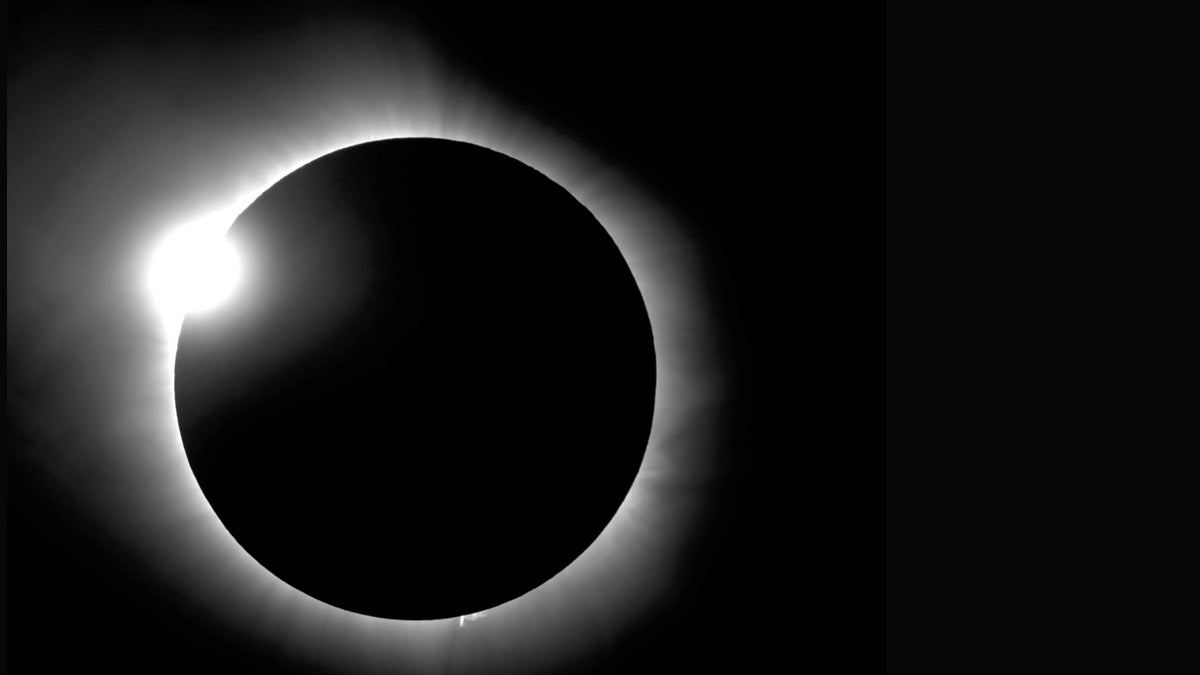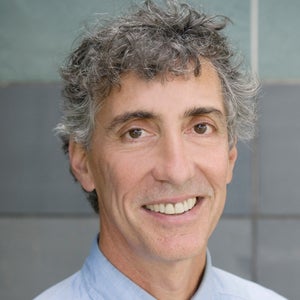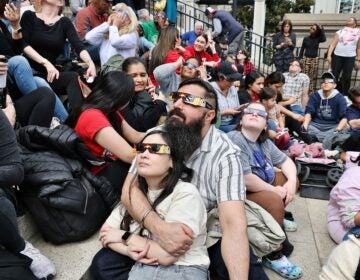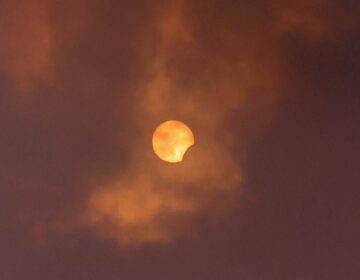Monday’s eclipse to provide rare research opportunity for scientists
Listen 8:38
This photo provided by Bob Baer and Sarah Kovac, participants in the Citizen CATE Experiment, shows a 'diamond ring' shape during the 2016 total solar eclipse in Indonesia. (R. Baer, S. Kovac/Citizen CATE Experiment via AP)
Paul Halpern, physics professor at University of the Sciences explains how scientists use this rare event in their research.
The great American total solar eclipse on Monday will darken the skies all the way from Oregon to South Carolina along a stretch of land some seventy miles wide.
Paul Halpern, physics professor at University of the Sciences explains how scientists use this rare event in their research.
Listen to the conversation above.
WHYY is your source for fact-based, in-depth journalism and information. As a nonprofit organization, we rely on financial support from readers like you. Please give today.





